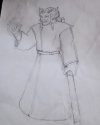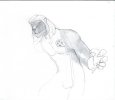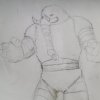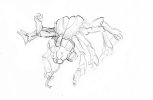Nobby-W
Not an axe murderer
- Joined
- Oct 7, 2018
- Messages
- 7,066
- Reaction score
- 15,997
I think some people think in 3 dimensions more easily than two. I can deal with physical models of 3D objects much more readily than I can mentally come up with a two dimensional drawing. I've had one or two arty types (back from the days when I used to flat with fine arts students) comment that everything I did always had depth or was always 3 dimensional.IDK, some people have a better sense for shapes in 3D for example. Or better (finer) hand eye coordination. Or whatever. Different brains aren't equally good at the same tasks. I'm not saying those people can't draw only that they might need some additional scaffolding that other people don't. I do agree that it's a Carnegie Hall kind of affair though, for anyone.
Funnily enough my mother used to teach structural geology papers which require the ability to visualise things in 3 dimensions. She commented that the distribution of marks you saw from those courses were always bimodal. You got the folks who could and the folks who couldn't. She thought that some people had the cognitive faculties to visualise stuff in 3 dimensions and some people didn't, and that tended to be the main element in whether people could really grasp the material.



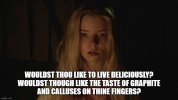
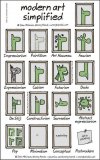
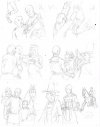


 As for musicality, yes there is an element to everything that is affected by talent. But with enough effort a rudimentary skill can be built.
As for musicality, yes there is an element to everything that is affected by talent. But with enough effort a rudimentary skill can be built. ). All joking aside, she's the fastest way I made progress. And she has a proven track record because she had to help several USA police depts. bring otherwise not-artistic cops up to speed in realism due to necessity.
). All joking aside, she's the fastest way I made progress. And she has a proven track record because she had to help several USA police depts. bring otherwise not-artistic cops up to speed in realism due to necessity. Go ahead and use all the tools!
Go ahead and use all the tools!
 .
. .
.
 Hope that helps!
Hope that helps! Good times, good times.
Good times, good times. ; I don't know if that's import prices, but it does push down my desire. Maybe a fairer comparison would be to Crayola Construction Paper crayons, which are also close to $5.
; I don't know if that's import prices, but it does push down my desire. Maybe a fairer comparison would be to Crayola Construction Paper crayons, which are also close to $5. My hate and bitterness has made a beautiful discovery, I am beside myself with confusion, and I don't know if I can replicate it in full with other crayons.
My hate and bitterness has made a beautiful discovery, I am beside myself with confusion, and I don't know if I can replicate it in full with other crayons. 

 At $1.25 a 24ct. box, or when I bought it on Back to School Sale $0.25, it is the best usable value at $0.05 to $0.01 per crayon... The palette is actually like a cross between Crayola and Sargent, so it's an infuriatingly useful mix of high chroma rainbow and artistic educational tonal palette. I hate them, I love them,
At $1.25 a 24ct. box, or when I bought it on Back to School Sale $0.25, it is the best usable value at $0.05 to $0.01 per crayon... The palette is actually like a cross between Crayola and Sargent, so it's an infuriatingly useful mix of high chroma rainbow and artistic educational tonal palette. I hate them, I love them,  I grind them with great fury against Amazon's packing paper and lament the artistically acceptable results.
I grind them with great fury against Amazon's packing paper and lament the artistically acceptable results.  Will no one rid me this meddlesome priest!
Will no one rid me this meddlesome priest! It's only like the other half of the drawing process!
It's only like the other half of the drawing process!





